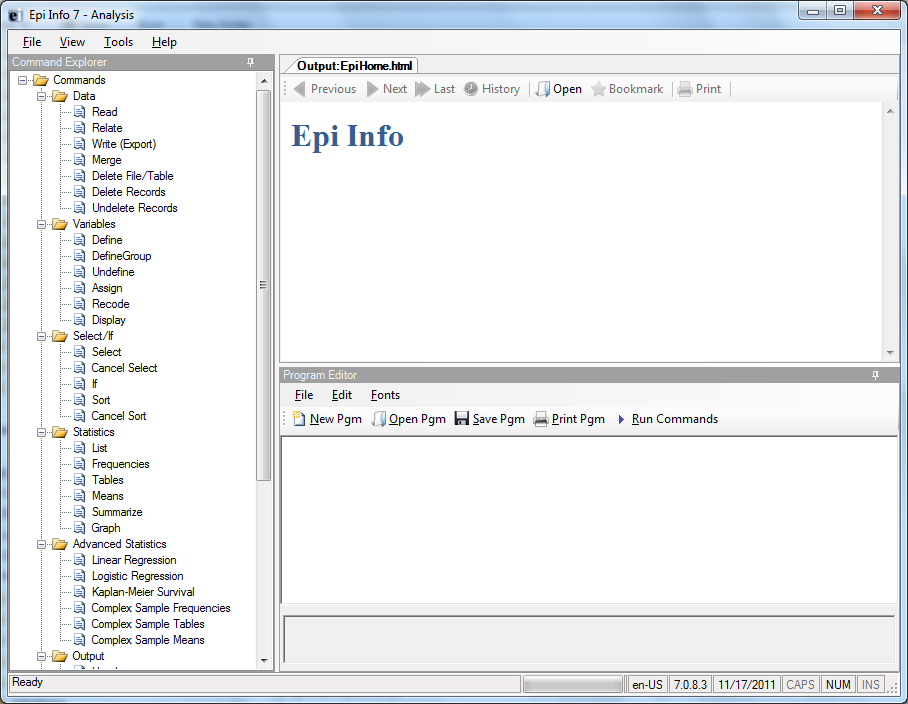Classic Analysis: Command Driven Analyses and Data Management
Introduction
Introduction
Classic Analysis manipulates, manages, and analyzes data. It acts as a statistical toolbox providing many ways to transform data and perform statistical Classic Analysis. Data can be selected, sorted, listed, or manipulated with a series of commands, functions, and operators. Available statistics include frequencies, means, and more advanced processes (i.e., Kaplan-Meier Survival Classic Analysis and Logistic Regression).
Classic Analysis can be accessed by clicking Classic from the Epi Info™ main window or by selecting Tools > Analyze Data>Classic. It reads data files created in Form Designer and other types of databases (e.g., MS Access, MS Excel, SQL Server, and ASCII). Classic Analysis can also produce graphs to present graphic representations of data.
Classic Analysis provides access to existing data directly or through forms created in Form Designer. It reads data from files and tables created in Epi Info 7, Microsoft Access, Microsoft Excel, SQL Server, and ASCII.
Navigate the Classic Analysis Workspace
The Classic Analysis module contains four areas: the Classic Analysis Command Tree, Program Editor, Classic Analysis Output window, and the Message Area.

Figure 9.1: Classic Analysis Workspace
- The Command Explorer contains a list of available commands separated into folders by command type. Commands are generated, edited, and executed. Selecting a command opens the corresponding dialog box for that command, function, or statistic to run.
- The Program Editor displays the commands and code created using the Classic Analysis Command Tree. Commands can also be typed directly into the Program Editor. Programs or .PGM files written in Classic Analysis can be stored in the current .PRJ or as text files. Saved programs can be run against new data, or shared with others.
- The Output window acts as a browser and displays information generated from commands run in Program Editor. The buttons allow you to navigate through program scripts that run and display in the output screen.
- The Message window alerts you if any problems occur with any executed commands.
Full Chapter 9: Classic Analysis in PDF and Word Doc Formats
Download the Epi Info™ 7, User Guide, Chapter 9: Classic Analysis for PDF [PDF 1,367 MB]:
A printable version of the Full Epi Info™ 7 User Guide, Chapter 9: Classic Analysis, available for download in PDF format.
Word Doc
Download the Epi Info™ 7, User Guide, Chapter 9: Classic Analysis [Word 1.489 KB]:
A printable version of the Full Epi Info™ 7 User Guide, Chapter 9: Analysis, available for download in Word Doc format.